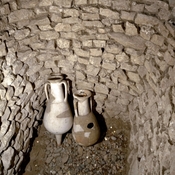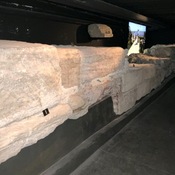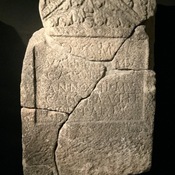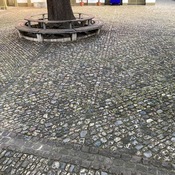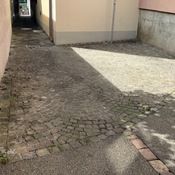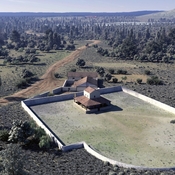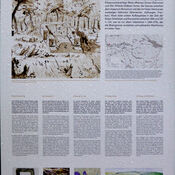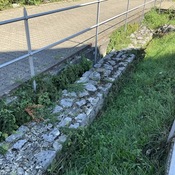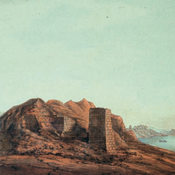Es gibt noch keine deutschsprachige Anmerkungen. Präsentiert wirden Anmerkungen auf English.
With the conquest of Gaul by Caesar around 52 BC, the region of Basel was under Roman control. The fortified settlement on the cathedral hill was ideal for controlling the incidence axes. Even after the subjugation of Gaul by Caesar, the Celtic structures of the settlement continued for the time being. Celtic nobles ruled the surrounding region on behalf of Rome from the cathedral hill.
Thanks to the concentration of trade, craft and rule, the well-fortified settlement (known to the Romans as such fortified settlements as oppida) functioned as a regional center. Various finds suggest that individual Roman military personnel or a small Roman contingent of troops were stationed to ensure control of the Celtic allies. Only at the beginning of the Augustan period ( from about 30-20 BC), the late Celtic buildings were demolished on the cathedral hill. The extensive fortification was laid down and it was a so-called vicus, a Roman village settlement. The newly founded colonial town of Augusta Raurica, which was located at the junction of several trade routes and where a bridge over the Rhine stood, was now the administrative, cultural and economic center of the region.
Source: https://de.wikipedia.org/wiki/Basel
Other source:https://www.archaeologie.bs.ch/50000-jahre/ueberblick/eisenzeit.html
About murus gallicus of Basel: https://www.archaeologie.bs.ch/vermitteln/info-stellen/rittergasse-4.html
With the conquest of Gaul by Caesar around 52 BC, the region of Basel was under Roman control. The fortified settlement on the cathedral hill was ideal for controlling the incidence axes. Even after the subjugation of Gaul by Caesar, the Celtic structures of the settlement continued for the time being. Celtic nobles ruled the surrounding region on behalf of Rome from the cathedral hill.
Thanks to the concentration of trade, craft and rule, the well-fortified settlement (known to the Romans as such fortified settlements as oppida) functioned as a regional center. Various finds suggest that individual Roman military personnel or a small Roman contingent of troops were stationed to ensure control of the Celtic allies. Only at the beginning of the Augustan period ( from about 30-20 BC), the late Celtic buildings were demolished on the cathedral hill. The extensive fortification was laid down and it was a so-called vicus, a Roman village settlement. The newly founded colonial town of Augusta Raurica, which was located at the junction of several trade routes and where a bridge over the Rhine stood, was now the administrative, cultural and economic center of the region.
Source: https://de.wikipedia.org/wiki/Basel
Other source:https://www.archaeologie.bs.ch/50000-jahre/ueberblick/eisenzeit.html
About murus gallicus of Basel: https://www.archaeologie.bs.ch/vermitteln/info-stellen/rittergasse-4.html





